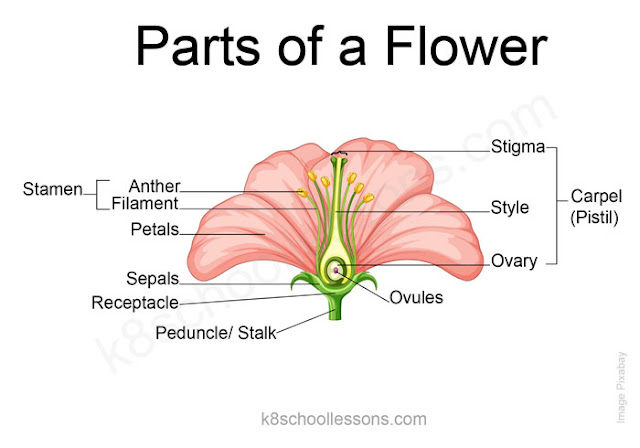Have you ever stopped to admire a beautiful flower and wondered what makes it so special? Well, get ready for an exciting adventure as we journey into the fascinating world of a flower's parts!
In this article, we will uncover the secrets hidden within a flower and discover how each part plays a unique role in its growth and reproduction. So, get your magnifying glasses ready, young nature enthusiasts, as we delve into the enchanting world of the parts of a flower!
The Petals: Nature's Rainbow Colors:
The first thing that catches our eye when we look at a flower are its petals. Petals come in all sorts of colors, like a rainbow in nature's garden. They are like the flower's beautiful dress, attracting insects and birds to come and visit. Some flowers have just a few petals, while others have many. Petals make the flower look pretty and help it to get pollinated by bringing in helpful pollinators like bees and butterflies.
The Sepals: Green Guardians:
Now, let's take a closer look at the base of the flower. There, we will find a group of leaf-like parts called sepals. These sepals are like the green guardians of the flower. They protect the delicate parts of the flower while it's still a bud, keeping them safe and cozy. Once the flower opens up, the sepals may remain at the bottom or fall off, depending on the type of flower.
The Stamens: Pollen Makers:
Inside the flower, we'll discover the stamens, the pollen makers! The stamens are like the flower's factories, producing a special dust called pollen. Each stamen has two important parts—the filament and the anther. The filament is like a thin stem, while the anther sits at the top, filled with pollen. Pollen is like magical dust that helps flowers make new baby flowers!The Pistil: The Flower's Baby Maker:
Right in the center of the flower, we'll find the pistil, the flower's baby maker! The pistil has three parts—the stigma, style, and ovary. The stigma is like a sticky landing pad, waiting for pollen to arrive. The style is a long tube that connects the stigma to the ovary. And inside the ovary are tiny eggs called ovules. When pollen lands on the stigma, it travels down the style and fertilizes the ovules. This special union creates seeds, which can grow into new flowers.
Putting It All Together: A Flower's Life Cycle:
Now that we know the different parts of a flower, let's discover how they work together in a flower's life cycle. Flowers need to be pollinated to make seeds. Pollination happens when pollen from the stamen lands on the stigma. It can be carried by insects, birds, wind, or even by people. Once the pollen meets the ovules inside the ovary, seeds start to develop. These seeds can be scattered and grow into new flowers, starting the cycle all over again.
Conclusion:
Flowers are like magical worlds full of wonder and beauty. Each part of a flower has a special job to do, from the colorful petals that attract pollinators, to the protective sepals, the pollen-making stamens, and the baby-making pistil. By understanding the parts of a flower, we can appreciate their incredible design and understand how flowers grow and reproduce. So, keep exploring, young nature enthusiasts, and let the secrets of the parts of a flower unfold before your eyes!
If you're eager to learn more about the parts of a flower, hop over to this amazing article: Parts of a Flower on k8schoollessons.com.
Why not put your knowledge to the test with these two exciting quizzes about the Parts of a Flower!

Comments
Post a Comment